SVBONY SV27 Handleiding
SVBONY
Verrekijker
SV27
Bekijk gratis de handleiding van SVBONY SV27 (4 pagina’s), behorend tot de categorie Verrekijker. Deze gids werd als nuttig beoordeeld door 36 mensen en kreeg gemiddeld 4.9 sterren uit 18.5 reviews. Heb je een vraag over SVBONY SV27 of wil je andere gebruikers van dit product iets vragen? Stel een vraag
Pagina 1/4

Congratulations on your choice of our binocular. Your binocular is a precision
instrument designed to provide many years of pleasurable viewing. This
guide will help you achieve optimum performance by explaining how you can
adjust the binocular to your eyes, how to care for this instrument, and. Read
the instrument carefully before using your binocular. Remove the eyepiece
lens cap covering, and then remove the objective lens cover.
Package Includes
● 7x50 Binoculars
● Soft Bag
● Neck Strap
● Eyepiece Cap
● Two Objective Lens Cap
● Lens Cleaning Cloth
● Two Button Battery
● User Manual
Technical specifications
1. Magnification: 7x
2. Objective lens: 50mm
3. Eyepiece diameter: 23mm
4. Prism System: Porro Bak4
5. Field of View: 396 ft/1000yds
6. Exit Pupil: 7mm
7. Eye Relief: 24mm
8. Waterproof Grade: IPX7
9. Lens Coating: FMC
10. Body Material: Plastic steel + Rubber
11. Eyecups Type: Folding Removable
12. Focus System: IF
13. Tripod Adaptable: Yes
14. Net Weight: 876g
Do not look directly into the sun with the binocular; this can be
very damaging to the eyes.
Adjusting the Interpupillary Distance (IPD)
Since the distance between the eyes (specifically, the distance between the
centers of the pupils) varies among individuals, the two eyepieces of the
binoculars must be correctly aligned (adjusted). This is called adjusting the
interpupillary distance. To adjust this distance, lift the binoculars up to your
eyes (using both hands) and look through them at an object in the distance.
Move the two halves of the binoculars about the hinge until you see one clear
circle of image through both eyes.
Focusing
Since most people have a variance of vision from their left eye to their right
eye, you must adjust the focusing system. Use the following steps to achieve
focus:
(1) Close your right eye and look through the left side of the binoculars with
your left eye at the subject matter. Rotate the center focusing wheel until
the image appears in sharp focus;
(2) Close your left eye and look through the right eyepiece (called the diopter).
Rotate the right eyepiece until the image appears in sharp focus;
(3) Look through both eyepieces with both eyes open. Since you’ve already
adjusted the right eyepiece, use only the center focusing wheel to refocus
on a new object at a different distance.
Hint: Eyeglasses worn for nearsightedness should be worn when using
binoculars as you may not be able to reach a sharp focus at infinity
without them.
Set the Rubber Eyecups
Keep the Rubber Eyecup up if you do not wear eyeglasses but fold them
down if you do wear eyeglasses to obtain the maximum field of view.
Installing the Batteries
The batteries included with your binocular are for illuminating the compass,
so you can see it easily in the dark. You need to install the batteries which
are located in the case pocket. Unscrew the battery cap by hand and then
remove the screw with a coin or screwdriver. The batteries are to be installed
with the positive (+) side facing up towards you. Replace the screw and
battery cap. If you will not be using the binocular for a long period of time (a
few months or more), you should take the batteries out to preserve their life.
Using the Reticle as a Measuring Device
1. View Angle
View Angle of an object is the angle between the rays from the Binocular to
its edges. Usually, this angle is measured at the horizontal or vertical direction,
and defined as Horizontal View Angle and Vertical View Angle. A mil’s Reticle
(shown to the right) that has a horizontal and vertical scale can measure the
viewing angle of an object. The SV27 uses 10 mils for each number
(1, 2, 3… as shown here).
2. Measuring the Horizontal View Angle
When the Horizontal View Angle is smaller than the horizontal scale range
(-40~+40 mils) inside the binocular, aim one edge of the object at a horizontal
scale line (the center or the outmost line is selected according to the image
size of the object usually) and read its value. Then read the value of the scale
at which another edge was located. Add these two values and this is the
measured Horizontal View Angle. The Horizontal View Angle of the target
(sailboat) is 5 decade mils (50 mils).
When the Horizontal View Angle is larger than the horizontal scale range
(-40~+40 mils), use vertical line splits (for example: mast, sail, etc.) on the
object can be selected to make the necessary estimated measurements in a
step by step fashion.
1 2
3 4

3. Measuring the Vertical View Angle
Vertical View Angle measurement is similar to measuring the Horizontal View
Angle. When the Vertical View Angle measurement is small, aim the
intersecting point of the vertical and horizontal lines of the Reticle at the lower
part of the object and read the scale value at the top of the object. The angle
included between the upper and lower parts of the target (lighthouse) is 6
decade mils (60 mils).
When the Vertical View Angle is larger than the vertical scale range (60 mils),
it can be measured in steps, and the angle can be obtained by summing up
the value of each step.
4. Using the Reticle to Measure Distance
The distance measurement of a target can be calculated by using mil Reticle.
The formula of distance measurement: L (km) = H (m)/ω
L- The distance between the observer and the object (km)
H - The height of the object (m)
ω - the View Angle of the object measured with the Reticle of the binocular
(mil).
When measuring the distance, estimate the width or height of the object and
next measure the View Angle of the object. Accordingly, you can calculate the
distance between the observer and the object using the formula.
For example:
There is an adult whose height is 1.70 m. (H = 1.70 m)
The Vertical View Angle of the adult is 4 decade mils (40 mils)
L = H/ω=1.7/40 = 0.0425 km = 42.5 m
Therefore: the distance between the observer and the adult is 42.5 m. (for
feet conversion, multiply 42.5 by 3.28).
Warranty Card
Product Model
Purchasing Date
Defect Reason
Dealer Name
Telephone
User’s Name
User’s Address
User’s Email
Guarantee Clause
1. Our product have one year guarantee and free after-sale service.
2. Please fill in the form with the correct and true information in case we can
resend the item to you.
5 6
7

Paket beinhaltet:
● 7x50 Fernglas
● Weiche Tasche
● Umhängeband
● Okularabdeckung
● Zwei Objektivdeckel
● Linsenreinigungstuch
● Zwei Knopfbatterien
● Benutzerhandbuch
Tec schni he Spezifikationen:
1.Grossissement:7x
2.Diamètre de l’objectif: 50mm
3.Diamètre de l’oculaire:23mm
4.Type de prisme:Porro Bak4
5.Champ de vision:396 ft/1000yds
6.Élève de sortie:7mm
7.Soulagement des yeux: 24mm
8.Grade imperméable: IPX7
9.Revêtement optique: FMC
10.Matériaux du corps: Plastique+Caoutchouc
11.Oeilletons Type: Pliant amovible
12.Système de mise au point: IF
13.Trépied Adaptable: Oui
14.Poids net: 876g
Schauen Sie mit dem Fernglas nicht direkt in die Sonne.
Dies kann sehr schädlich für die Augen sein.
Einstellen des Pupillenabstands (IPD)
Fokussieren
Gummi-Augenmuscheln einstellen
Halten Sie die Gummi-Augenmuschel nach oben, wenn Sie keine Brille tragen,
und klappen Sie sie nach unten, wenn Sie eine Brille tragen, um das maximale
Sichtfeld zu erzielen.
Einlegen der Batterien
Verwendung des Fadenkreuzes als Messgerät
1. Blickwinkel
2. Messen des horizontalen Betrachtungswinkels
1 2
3 4
Warnung
Herzlichen Glückwunsch zu Ihrer Wahl unseres Fernglases. Ihr Fernglas ist
ein Präzisionsinstrument, mit dem Sie viele Jahre lang Freude am Sehen
haben. Diese Anleitung hilft Ihnen dabei, eine optimale Leistung zu erzielen,
indem sie erklärt, wie Sie das Fernglas an Ihre Augen anpassen können,
wie Sie dieses Instrument pflegen und. Lesen Sie das Instrument sorgfältig
durch, bevor Sie Ihr Fernglas verwenden. Entfernen Sie die Okularabdeck-
ung und dann die Objektivabdeckung.
Da der Abstand zwischen den Augen (insbesondere der Abstand zwischen den
Zentren der Pupillen) bei einzelnen Personen unterschiedlich ist, müssen die
beiden Okulare des Fernglases korrekt ausgerichtet (eingestellt) werden. Dies
wird als Einstellen des Pupillenabstands bezeichnet. Um diesen Abstand
einzustellen, heben Sie das Fernglas mit beiden Händen an Ihre Augen und
schauen Sie durch sie auf einen Gegenstand in der Ferne.
Bewegen Sie die beiden Hälften des Fernglases um das Scharnier, bis Sie mit
beiden Augen einen klaren Bildkreis sehen.
Da die meisten Menschen eine unterschiedliche Sicht vom linken zum rechten
Auge haben, müssen Sie das Fokussierungssystem anpassen. Führen Sie die
folgenden Schritte aus, um den Fokus zu erzielen:
(1) Schließen Sie Ihr rechtes Auge und schauen Sie mit Ihrem linken Auge durch
die linke Seite des Fernglases auf das Motiv. Drehen Sie das linke Okular, bis das
Bild scharf erscheint.
(2) Schließen Sie Ihr linkes Auge und schauen Sie durch das rechte Okular
(Dioptrien genannt). Drehen Sie das rechte Okular, bis das Bild scharf erscheint.
(3) Schauen Sie mit beiden offenen Augen durch beide Okulare.
Hinweis: Myopie sollte eine Myopiebrille tragen, wenn Sie ein Fernglas verwen-
den, da Sie sonst möglicherweise nicht in der Lage sind, einen scharfen Fokus im
Unendlichen zu erreichen.
Die im Lieferumfang Ihres Fernglases enthaltenen Batterien dienen zur Beleuchtung
des Kompasses, sodass Sie ihn im Dunkeln leicht sehen können. Sie müssen die
Batterien einlegen, die sich in der Gehäusetasche befinden. Schrauben Sie den
Batteriefachdeckel von Hand ab und entfernen Sie die Schraube mit einer Münze
oder einem Schraubendreher. Die Batterien müssen mit dem Pluspol (+) nach oben
eingelegt werden. Bringen Sie die Schraube und den Batteriefachdeckel wieder an.
Wenn Sie das Fernglas längere Zeit nicht benutzen (einige Monate oder länger),
sollten Sie die Batterien herausnehmen, um ihre Lebensdauer zu erhalten.
Betrachtungswinkel eines Objekts ist der Winkel zwischen den Strahlen vom
Fernglas zu seinen Rändern. Normalerweise wird dieser Winkel in horizontaler
oder vertikaler Richtung gemessen und als horizontaler Betrachtungswinkel und
vertikaler Betrachtungswinkel definiert. Ein Mil-Fadenkreuz (rechts gezeigt) mit
horizontaler und vertikaler Skalierung kann den Betrachtungswinkel eines Objekts
messen. Der SV27 verwendet 10 mil für jede Nummer (1, 2, 3… wie hier gezeigt).
Wenn der horizontale Betrachtungswinkel kleiner als der horizontale Skalenbereich
(-40 ~ + 40 mils) innerhalb des Fernglases ist, richten Sie eine Kante des Objekts
auf eine horizontale Skalenlinie (die mittlere oder äußerste Linie wird entsprechend
der Bildgröße von ausgewählt) und lesen Sie seinen Wert. Lesen Sie dann den
Wert der Skala ab, an der sich eine andere Kante befand. Addieren Sie diese
beiden Werte und dies ist der gemessene horizontale Betrachtungswinkel. Der
horizontale Blickwinkel des Ziels (Segelboot) beträgt 5 Dekaden mil (50 mil).
Wenn der horizontale Betrachtungswinkel größer ist als der horizontale Skalenbere-
ich (-40 ~ + 40 mils), können vertikale Linienaufteilungen (z. B. Mast, Segel usw.)
für das Objekt ausgewählt werden, um die erforderlichen geschätzten Messungen
in a durchzuführen Schritt für Schritt Mode.
Product specificaties
| Merk: | SVBONY |
| Categorie: | Verrekijker |
| Model: | SV27 |
Heb je hulp nodig?
Als je hulp nodig hebt met SVBONY SV27 stel dan hieronder een vraag en andere gebruikers zullen je antwoorden
Handleiding Verrekijker SVBONY

14 Augustus 2023

14 Augustus 2023
Handleiding Verrekijker
- Alpen Optics
- Liemke
- Night Owl
- Osprey
- Maginon
- Eagle Optics
- Swarovski
- Kite Optics
- Crivit
- Discovery
- Kayoba
- Armasight
- Steiner
- Barska
- ATN
Nieuwste handleidingen voor Verrekijker
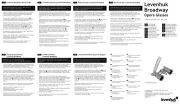
11 September 2025
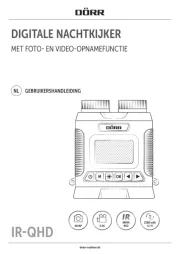
1 September 2025
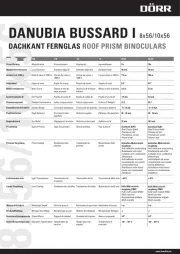
25 Augustus 2025
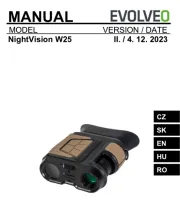
15 Augustus 2025

5 Augustus 2025

22 Juli 2025

22 Juli 2025
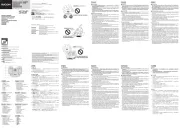
21 Juli 2025

21 Juli 2025
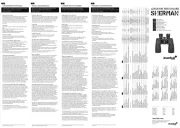
21 Juli 2025